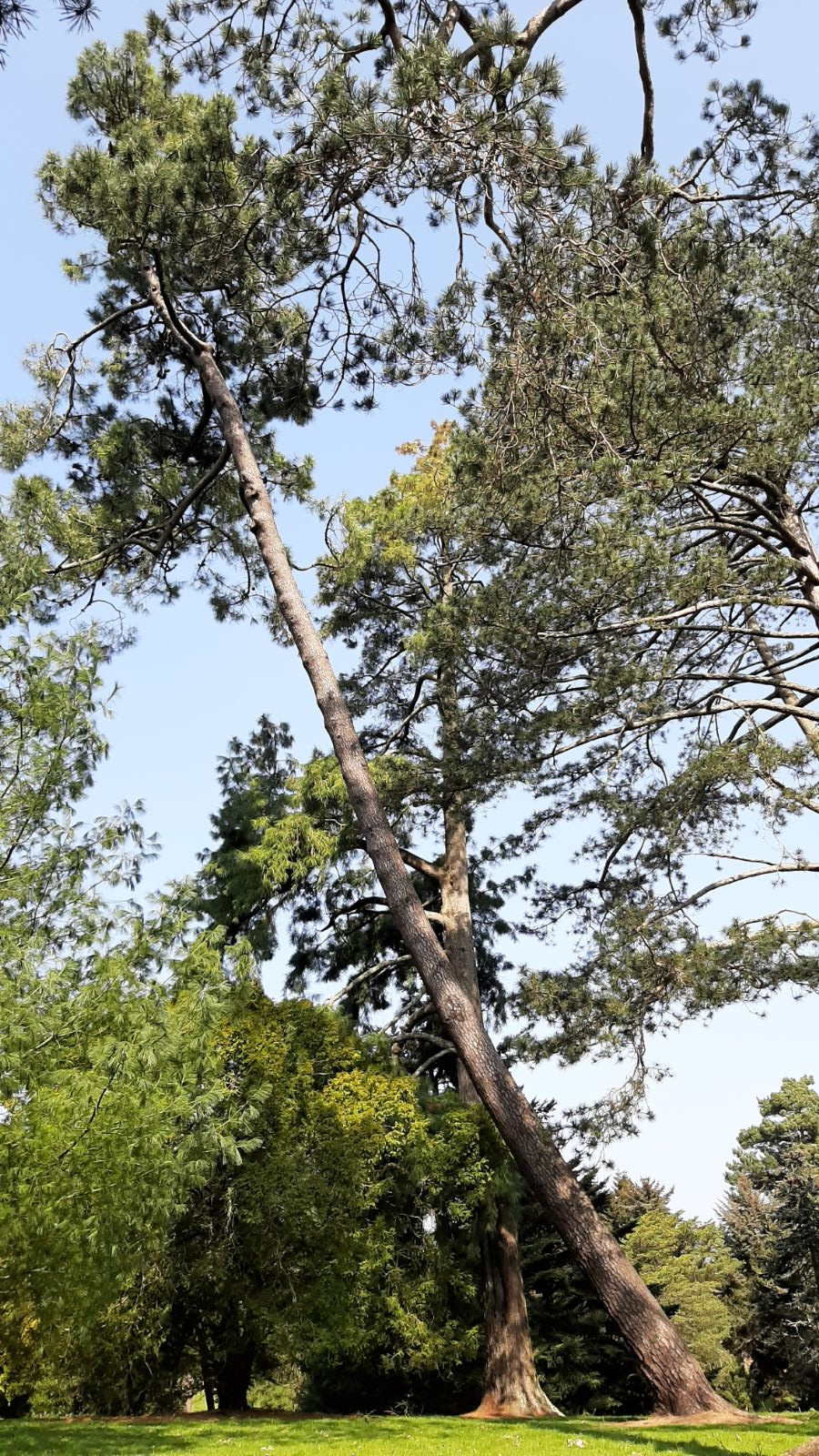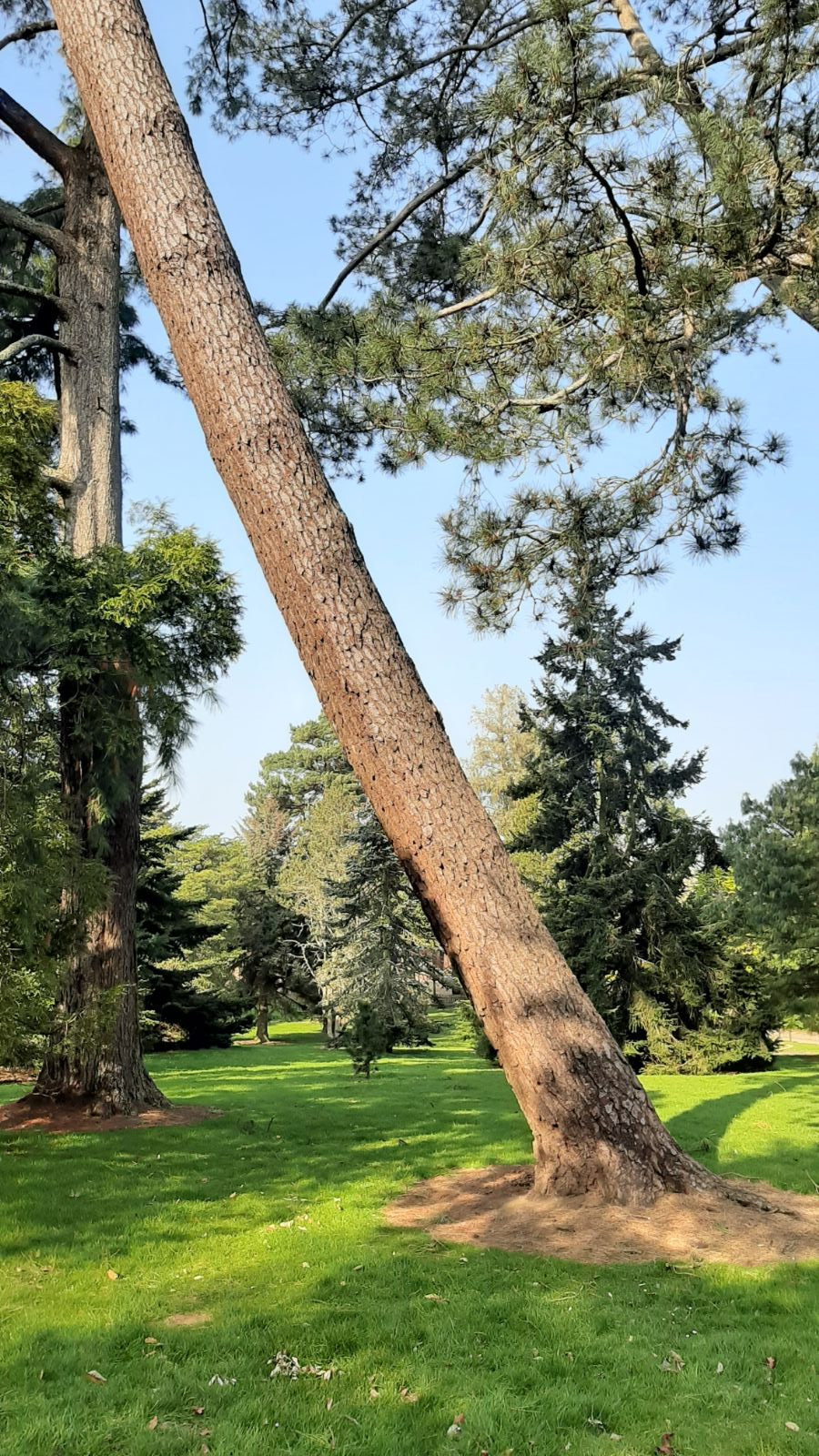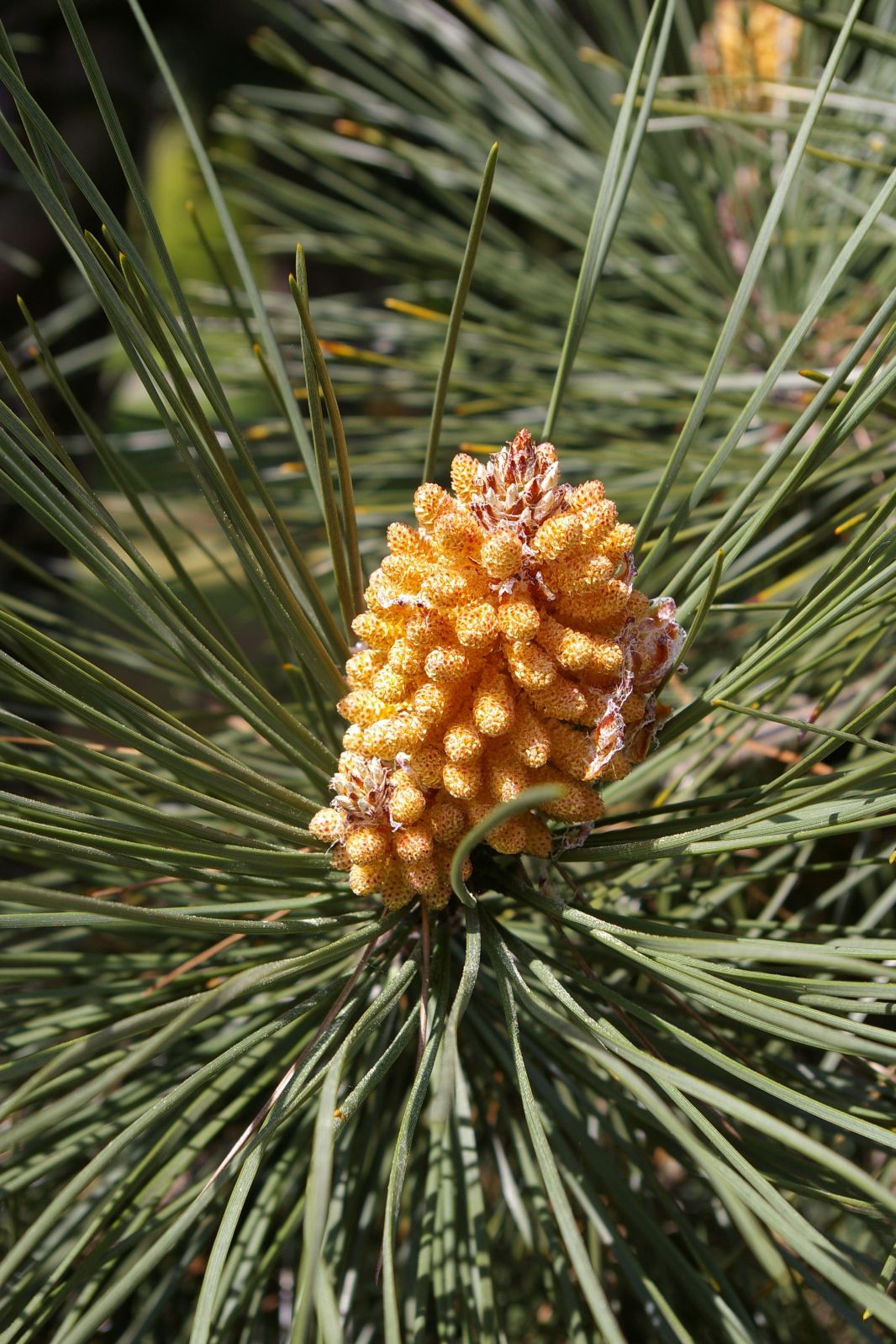Pinus pinaster
Credits
Article from Bean's Trees and Shrubs Hardy in the British Isles
Article from New Trees by John Grimshaw & Ross Bayton
Recommended citation
'Pinus pinaster' from the website Trees and Shrubs Online (treesandshrubsonline.
Genus
- Pinus
- Subgen. Pinus, Sect. Pinus
Common Names
- Maritime Pine
- Cluster Pine
Synonyms
- P. maritima Poir.
- P. sylvestris Mill., not L.
Infraspecifics
Other taxa in genus
- Pinus albicaulis
- Pinus arizonica
- Pinus armandii
- Pinus attenuata
- Pinus ayacahuite
- Pinus balfouriana
- Pinus banksiana
- Pinus bhutanica
- Pinus brutia
- Pinus bungeana
- Pinus canariensis
- Pinus cembra
- Pinus cembroides
- Pinus chiapensis
- Pinus contorta
- Pinus coulteri
- Pinus culminicola
- Pinus densata
- Pinus densiflora
- Pinus devoniana
- Pinus durangensis
- Pinus echinata
- Pinus edulis
- Pinus elliottii
- Pinus engelmannii
- Pinus eremitana
- Pinus flexilis
- Pinus gerardiana
- Pinus greggii
- Pinus × hakkodensis
- Pinus halepensis
- Pinus hartwegii
- Pinus heldreichii
- Pinus henryi
- Pinus × holfordiana
- Pinus hwangshanensis
- Pinus jeffreyi
- Pinus johannis
- Pinus koraiensis
- Pinus lambertiana
- Pinus leiophylla
- Pinus longaeva
- Pinus massoniana
- Pinus maximartinezii
- Pinus monophylla
- Pinus montezumae
- Pinus monticola
- Pinus morrisonicola
- Pinus mugo
- Pinus muricata
- Pinus nelsonii
- Pinus nigra
- Pinus oocarpa
- Pinus orizabensis
- Pinus palustris
- Pinus parviflora
- Pinus patula
- Pinus peuce
- Pinus pinceana
- Pinus pinea
- Pinus ponderosa
- Pinus pseudostrobus
- Pinus pumila
- Pinus pungens
- Pinus quadrifolia
- Pinus radiata
- Pinus remota
- Pinus resinosa
- Pinus rigida
- Pinus roxburghii
- Pinus sabiniana
- Pinus serotina
- Pinus sibirica
- Pinus strobiformis
- Pinus strobus
- Pinus sylvestris
- Pinus tabuliformis
- Pinus taeda
- Pinus taiwanensis
- Pinus teocote
- Pinus thunbergii
- Pinus torreyana
- Pinus virginiana
- Pinus wallichiana
- Pinus wangii
- Pinus yunnanensis
A tree reaching 100 to 120 ft in height, forming a tall, rugged, dark trunk. Young shoots not downy, pale brown; terminal winter-buds, 1 to 11⁄4 in. long, 1⁄2 to 1⁄2 in. wide, cylindrical with a conical apex, clothed with awl-shaped, outwardly curving scales conspicuously fringed with silvery threads. Leaves in pairs, 4 to 8 in. long, 1⁄12 in. wide, stiff and stout, dark green, falling the third and fourth years; slightly roughened at the margins; leaf-sheath 5⁄8 to 3⁄4 in. long, persistent. Cones usually borne in whorls, deflexed, 4 or 5 (sometimes 7) in. long, 2 to 21⁄2 in. wide at the base before opening, tapering to a point, bright brown, often persisting for many years.
Native of S.W. Europe and N. Africa; planted and naturalised in the Atlantic zone from S.W. France to Portugal; cultivated in Britain since the 16th century. As an old tree it is singularly picturesque, its dark, deeply fissured trunk being naked for two-thirds of its height. As a young tree it grows with great rapidity – 2 ft per annum – and has a coarse, gaunt aspect. The leaves of this pine are the largest and stoutest of all hardy Old World pines and of all two-leaved pines, although they are of course exceeded in size by those of Californian and Mexican species. It is, as its common name implies, admirably adapted for maritime localities. The famous pine plantations of Bournemouth are largely composed of this tree. It is also one of the very best for light sandy soils. It yields a valuable product in its resin, but its timber is poor. Nowhere has its economic value been so efficiently demonstrated as in the Landes of France, south of Bordeaux. Here in 1904, mostly planted by man, it covered an area of about 13⁄4 million acres, yielding an annual revenue of £560,000, and this from land which previously was mainly desert. Among two-leaved pines it is distinguished by the size and length of leaf, and by the curly, fringed bud-scales.
The trees of the Atlantic zone differ from the wild trees in their shorter leaves and smaller cones and probably represent a cultivated race adapted to an oceanic climate. They are sometimes distinguished as subsp. atlantica H. del Villar. The description given above is really of this subspecies, to which all the trees cultivated in Britain probably belong. In what is regarded as typical P. pinaster the leaves are 7 to 10 in. long and the cones 51⁄2 to almost 9 in. long.
The maritime pine is short-lived in cultivation, though a few old trees survive, notably the following: Curraghmore, Co. Waterford, Eire, probably pl. 1770, 102 × 93⁄4 ft (1968); Sheffield Park, Sussex, pl. c. 1800, 85 × 15 ft (1968); Holme Lacy, Heref., 95 × 11 ft, with a superb bole of 80 ft (1974). Younger trees of which the planting date is known are: Wakehurst Place, Sussex, pl. 1913, 76 × 73⁄4 ft (1970); National Pinetum, Bedgebury, Kent, pl. 1926, 62 × 53⁄4 ft (1966).
From the Supplement (Vol. V)
specimens: Ashburnham Park, Sussex, 102 × 103⁄4 ft and 85 × 111⁄2 ft (1983); Leonardslee, Sussex, 98 × 91⁄2 ft (1984); Wakehurst Place, Sussex, pl. 1913, 76 × 73⁄4 ft (1970); National Pinetum, Bedgebury, Kent, pl. 1926, 71 × 61⁄2 ft (1978); ‘The Heath’, Leighton Buzzard, Beds., 75 × 113⁄4 ft (1977); Howick Church, Northumb., 62 × 111⁄2 ft (1978); The Gliffaes Hotel, Powys, 46 × 9 ft (1984).
The Curraghmore tree mentioned on page 237, said to have been planted around 1770, has not been remeasured.
From New Trees
Pinus pinaster Aiton
(Subgen. Pinus, Sect. Pinus)
Maritime Pine
This species was described by Bean (B236, S379) and Krüssmann (K230), but is briefly discussed here to recognise new names and concepts within its variation. The intraspecific taxonomy of P. pinaster is complex and understudied. While subsp. renoui is geographically isolated in North Africa, the distributions of subsp. escarena and subsp. pinaster overlap in the western Mediterranean. In part this is due to the use of these trees in land reclamation – the largest man-made forest in the world being the 900,000 ha Les Landes plantation, predominantly of P. pinaster, along the Atlantic coast of France. The morphological characters used to identify the subspecies are at best tenuous, and a fresh study is needed to make sense of these characters and the wealth of synonyms in use.
| 1a. | Leaves 18–25 cm long; cones 14–22 cm long; western Mediterranean (southeast France, Italy, Malta, Spain) | subsp. escarena |
| 1b. | Leaves 10–20 cm long; cones 9–18 cm long | 2 |
| 2a. | Umbo prominent and pyramidical, with a spike; North Africa | subsp. renoui |
| 2b. | Umbo flat or slightly raised, without a spike; Atlantic coast of Europe (France, Portugal, Spain) | subsp. pinaster |
subsp. escarena (Risso) K. Richt.
Synonyms
P. pinaster subsp. hamiltonii (Ten.) Villar
P. pinaster var. mesogeensis (Fieschi & Gaussen) Silba
This subspecies has longer leaves than the type (18–25 cm long vs. 10–20 cm), and larger cones (14–22 cm long vs. 9–18 cm). Farjon 2005a. Distribution FRANCE: Corsica, Mediterranean coast; ITALY: mainland west coast, Sardinia, Sicily; MALTA; SPAIN: Balearic Is., Mediterranean coast. Habitat Low-lying coastal plains in sandy soils, between 0 and 400 m asl (to 900 m asl in Corsica). USDA Hardiness Zone 8. Conservation status Not evaluated.
subsp. renoui (Villar) Maire
Synonyms
P. pinaster var. maghrebiana Villar
Subsp. renoui has prominent, pyramidal umbos that are armed with a spike. The seed scales are acute and 1.25–2.4 cm long. Farjon 2005a. Distribution ALGERIA: coast by Tunisian border; MOROCCO: northern provinces (Aberdouz, Agoudim, Amassine, Anefgou); TUNISIA: coast by Algerian border. Habitat Atlas Mts., to 2000 m asl. USDA Hardiness Zone 8. Conservation status Endangered.
Pinus pinaster is a commonly grown tree in western Europe, and its value has been recognised in the form of an Award of Garden Merit by the Royal Horticultural Society. It is particularly successful on sandy soils, and develops from a gawky adolescence into a handsome older tree. It is probable that individuals in cultivation are principally subsp. pinaster, and equally probable that they are not distinguishable with any degree of certainty. If future collections are made in the wild, however, the locality and varietal attribution of the population(s) should be retained with the trees. It is less likely that subsp. renoui will be found in general cultivation, but there is a specimen at Benmore, accessioned in 1976 (from a collection made by Sendergaard in Morocco), and there are several trees at Kew of similar age.



